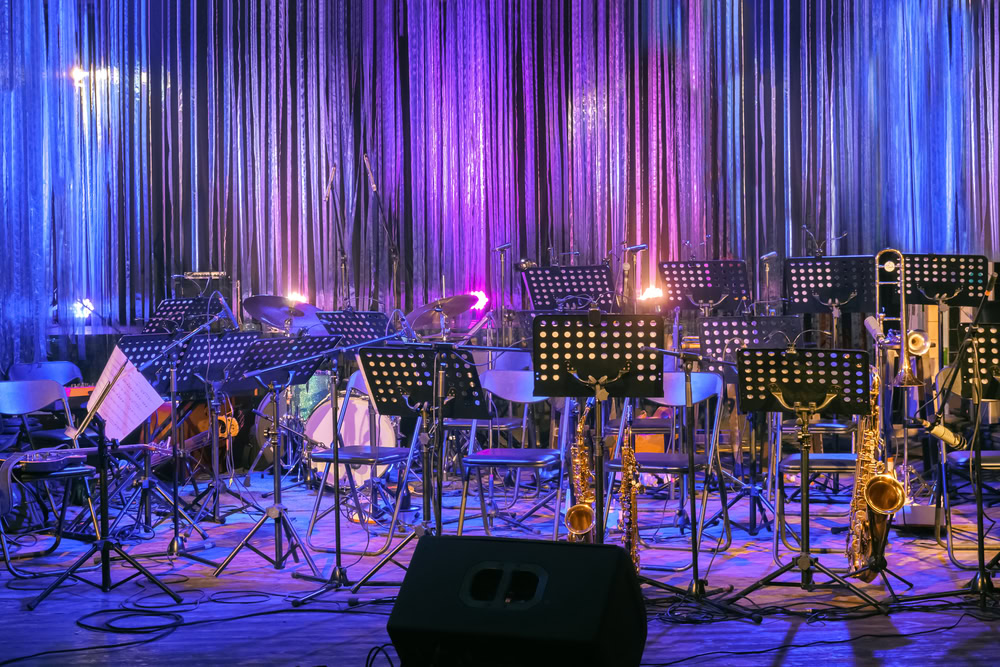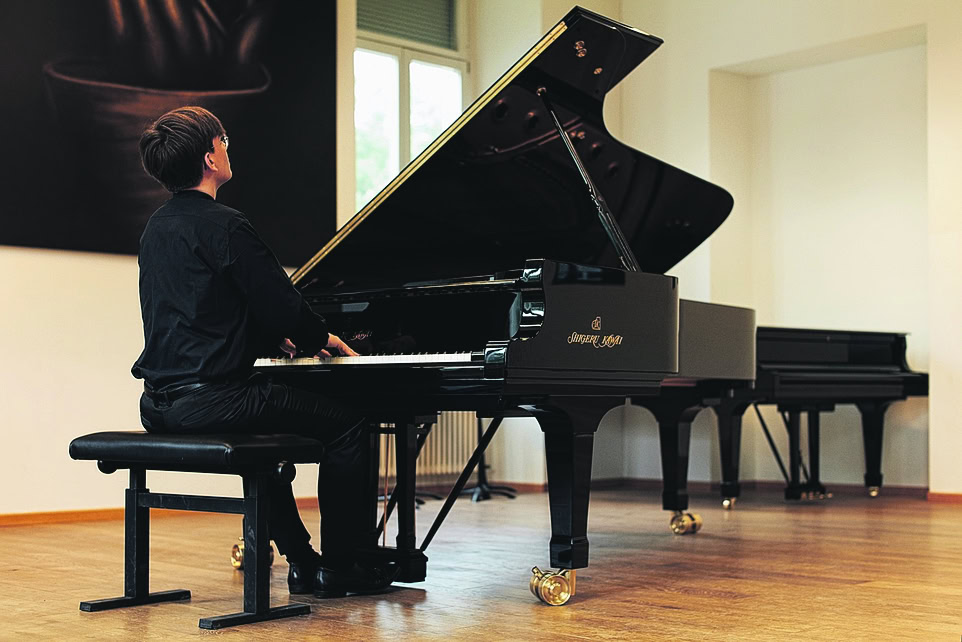Hearing protection at conservatories
Musicians are very often exposed to potentially damaging sound levels in their profession. Protection would be possible. But is hearing protection sufficiently anchored in teaching?

When you think of hearing protection and music, many people probably immediately think of a rock band practising at a deafening volume in a small cellar, or a DJ spinning for hours with thumping bass in a disco. In such situations, hearing protection is obvious and probably understandable for everyone.
However, various measurements show that hearing protection would also be appropriate in areas or situations that are less obvious.
The ear is an extremely sensitive sensory organ with which we can perceive the slightest noises or sounds - and that is precisely why it is also very delicate and vulnerable.
One of the main challenges in hearing protection is probably that hearing damage is not announced by pain, as in the case of tendonitis, for example, but is a gradual process. If the hearing has been overloaded over a long period of time, it is often too late and irreversible hearing damage is the bitter reality.
And it is precisely for this reason that aspiring professional musicians should be sensitized to and trained in the topic.
Should! In a further survey, the Kalaidos University of Music investigated how and whether hearing protection is discussed and applied at Swiss conservatoires. The aim of this study was to numerically record the current use of hearing protection measures among lecturers at Swiss conservatoires and to determine the reasons (cognitive, social) for their use or non-use.
In summary, the study shows that sound hearing protection management is rarely part of professional music studies.
Of the 111 participants in total, only 25 (23%) stated that they use hearing protection during lessons. In comparison, around 70 percent of professional orchestras use such protection (Chiller & Portner, 2020). However, this figure also corresponds to the practice at music schools, where only 26% of teachers use hearing protection (Hänni, 2021).
The study also shows that there are major differences in hearing protection practices between the various instruments:
while lecturers for drums, percussion and mallets use hearing protection in over 80 percent of cases, the figure for woodwind instruments and ensembles, orchestras or bands is around a third in each case; all others took hearing protection measures even less frequently. It is astonishing that none of the lecturers for loud wind instruments with a dB(A) above 90 (clarinet, saxophone, trumpet, trombone, horn) protected their hearing. Even if it must be taken into account here that only a few lecturers in this group took part in the study, this nevertheless gives an indication of how little hearing protection is used for these instruments.
The social climate among lecturers with regard to hearing protection was good, which was reflected in mutual understanding and few inhibitions in the use of hearing protection measures. However, awareness of their own risk was distorted and those who had an unfavorable risk assessment themselves were less likely to discuss hearing protection with students.
Underestimated risk
As with professional orchestras or amateur formations (see SMZ article 3/2022), the actual risk is subjectively underestimated in many cases.
After all, teaching can also put your hearing under considerable strain:
In 61 percent of the cases evaluated here, the respondents were teaching an instrument with an average sound level of at least 86 dB(A), which is considered potentially hazardous according to Suva.
It was therefore less social and more cognitive factors (i.e. the extent to which one feels subjectively at risk) that determined hearing protection management at conservatoires. The majority of participating lecturers reported that their students hardly or never take measures to protect their hearing during lessons, even though hearing protection is discussed. And yet studies (Auchter & LePrell, 2014) confirm that it makes sense to learn how to use hearing protection at an early age.
There is therefore a need for action. And this has already been recognized by the Conference of Swiss Music Universities (KMHS), whose members are considering whether and how teachers can be made aware of the issue and how it can be integrated more strongly into music lessons. And that's a good thing, because after all, it's about protecting the hearing - and thus the capital of future musicians.
The detailed final report can also be found at
kalaidos-fh.ch/en-CH/Research/Faculty-Music/Focus on hearing protection
Bibliography
Auchter, M., & Le Prell, C. G. (2014). Hearing Loss Prevention Education Using Adopt-a-Band: Changes in Self-Reported Earplug
Use in Two High School Marching Bands. American Journal of Audiology, 23(2), 211-226.
Chiller, S., & Portner, S. (2020a). Hearing protection in amateur music groups: Final report. Kalaidos University of Applied Sciences Switzerland.
Hänni, S. (2021), Hearing protection in music lessons. Bern University of the Arts.








